パックラフト・アディクト | #41 ディンケル川、夜間外出禁止令のなか日帰りパックラフティング
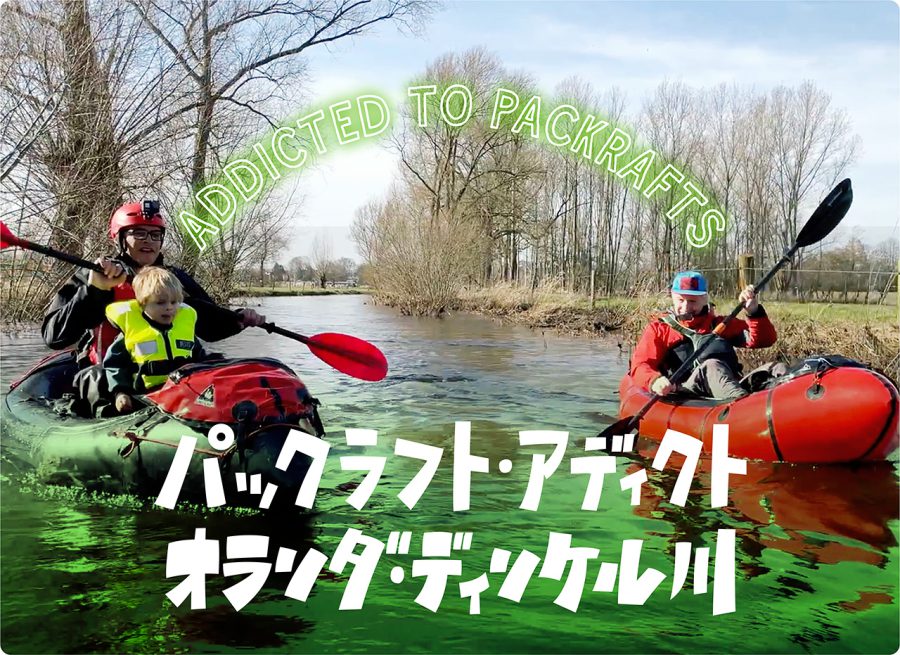
Spring Packrafting in Winter – Paddling the Dinkel, the Netherlands.
This February we had really strange and unusual couple of weeks. First, without much warning, the winds from the Arctic brought the cold and snow. For over a week, the temperatures in the night in the Netherlands were below -10 C° and, for the first time in several years, all canals, lakes and rivers were clad in ice. Looking for a break from the Covid-19 lockdown, people went into the nature en masse to enjoy the snow or skating on the natural ice. Then, as suddenly, the wind direction changed and the warm air from the South brought an unparalleled warmth and sand from Sahara (which was responsible for stunningly beautiful sunsets and sunrises, the color of which local meteorologists described as ‘salmon’). For close to a week, the day temperatures in the Netherlands were over 15 C°, making it the warmest February on record. That also meant that all the snow melted rapidly, leading to elevated levels of water.

This great combination of warm spring weather and plentiful water was something that we could not just ignore. That is why some packrafting friends of mine and I decided to open this year’s paddling season. And we did it on the Dinkel, a small river on the Dutch/German boarder at the East of the country. The part we paddled (a 15-kilometer stretch between Losser and the Lutterzand) still mostly preserves its natural character and charm, as it meanders through its ancient landscape.
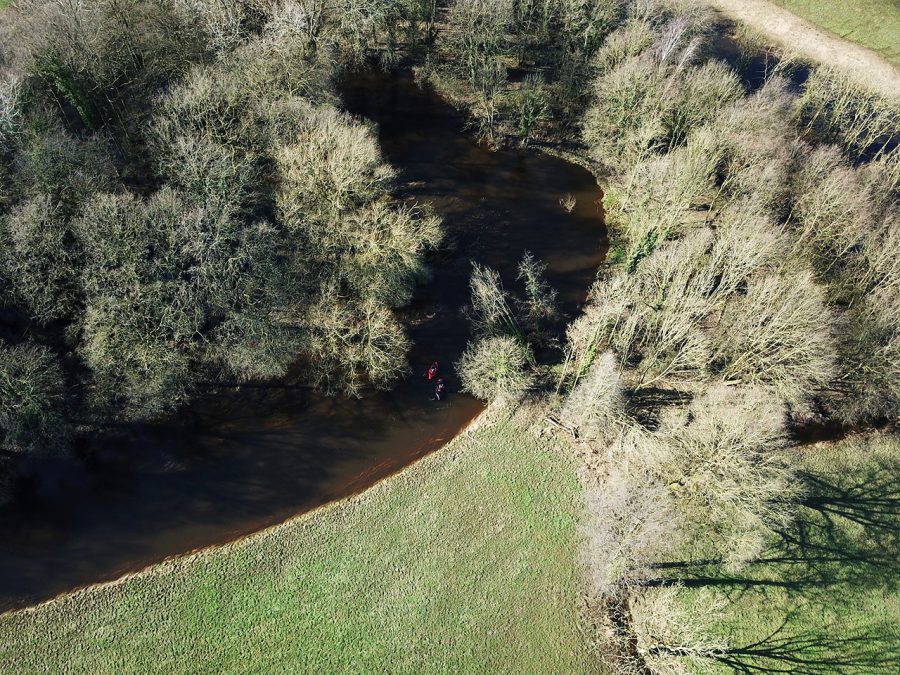
The idea to go paddling together was not new. Already at the beginning of January we were thinking of a weekend trip, sometime at the end of February. However, due to the introduction to the nation-wide curfew at the end of January (you are not allowed to be outside between 21:00 and 4:30), all our plans had to be put on hold. Until we saw the weather forecast, that is. We knew that a trip with an overnight stay was out of the question, but a day trip should have been possible. We only needed to make sure that we would be back home by 21:00.
Besides Remi, who you might already know from my previous stories, another Dutch packrafter joined us as well. His name is Didier and we met him at last year’s European Packrafting Meet-up in Austria. Though relatively new to packrafting, Didier is a very experienced outdoorsman and paddler, and has already made some packrafting expeditions in Alaska and Belize.
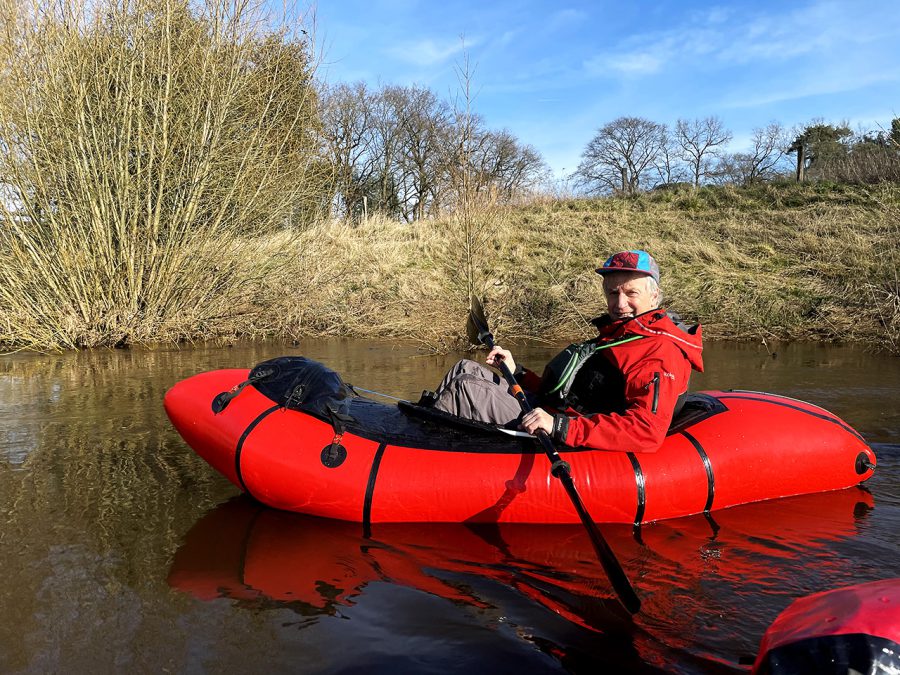
The fourth member of our team was Remi’s son, Senn, who, while being just over 2 years old, has already been camping and packrafting with his parent for a while.
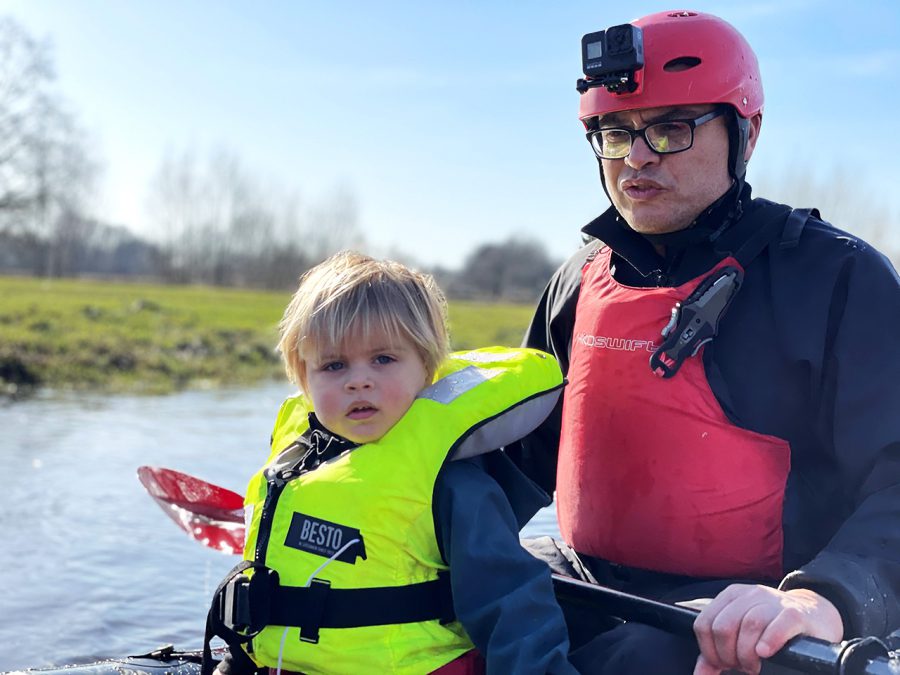
To paddle the Dinkel, you need to have an official permit from Waterschaap Vechtstromen, the water management company responsible for the rivers in this area. This permit is free and allows you to paddle the river between October 1 and March 31. As with almost everything nowadays, you can get it online. This time, it went really fast, and I received the permit by email within one working day.
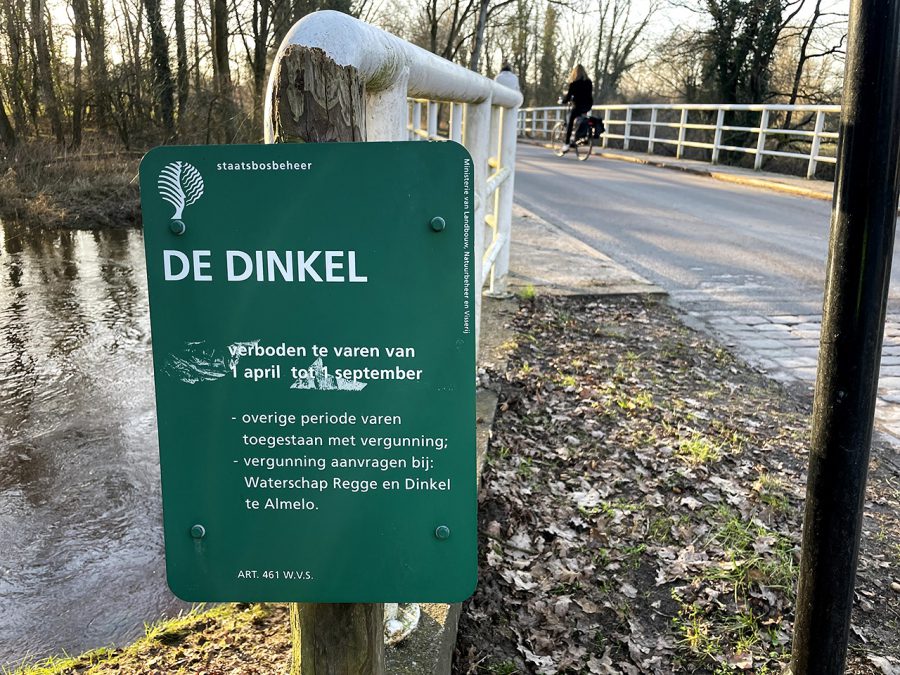
I say “this time” because I already paddled the Dinkel, in October 2014. It was a very different trip. Back then, I took a train to Gronau in German, from where I walked a short distance along the river back to the Netherlands, before starting a 27km paddling trip. The shallow (just knee-deep) and transparent river was flanked by high banks. On its sunlit sandy bottom, I could see hundreds of crawfish. I had never encountered so many of them so close by. They were literally within a hand’s reach – I even managed to pull a couple out of the water to have a closer look.
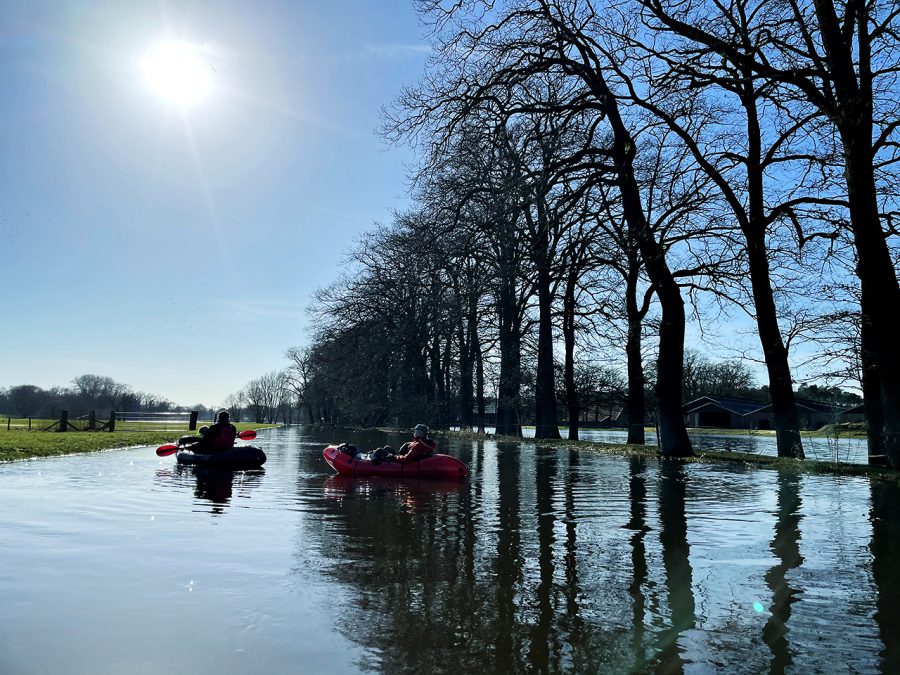
This trip, however, the river was very different. Due to the snowmelt the water lever was much higher. Even before the trip, I saw some live stream from a local webcam, on which you could barely see the difference between the river and submerged fields next to it.
By the time we got there, the flooding was partially over. Still, the water was reaching the top of the Dinkel’s high riverbanks, while, sometimes, even flowing onto the fields that were lying below us or creating ‘shortcuts’ between the meanders. At one point, I tried to see how deep the river was by sticking my paddle into the water, and to my surprise, I could not reach the bottom – it was definitely a very different river from what I experienced the first time.
As all of us had to come from different parts of the country, we decided to meet at the take-out point, where we left two cars (Didier’s and mine) and take Remi’s car to the put-in. We reasoned that as we did not know how long exactly the whole trip would take and as Didier had to travel the furthers (over 2.5 hours as he literally lives on the other side of the country, close to the North Sea) it would make sense that he would be able to leave earlier to make sure that he is back before the curfew.
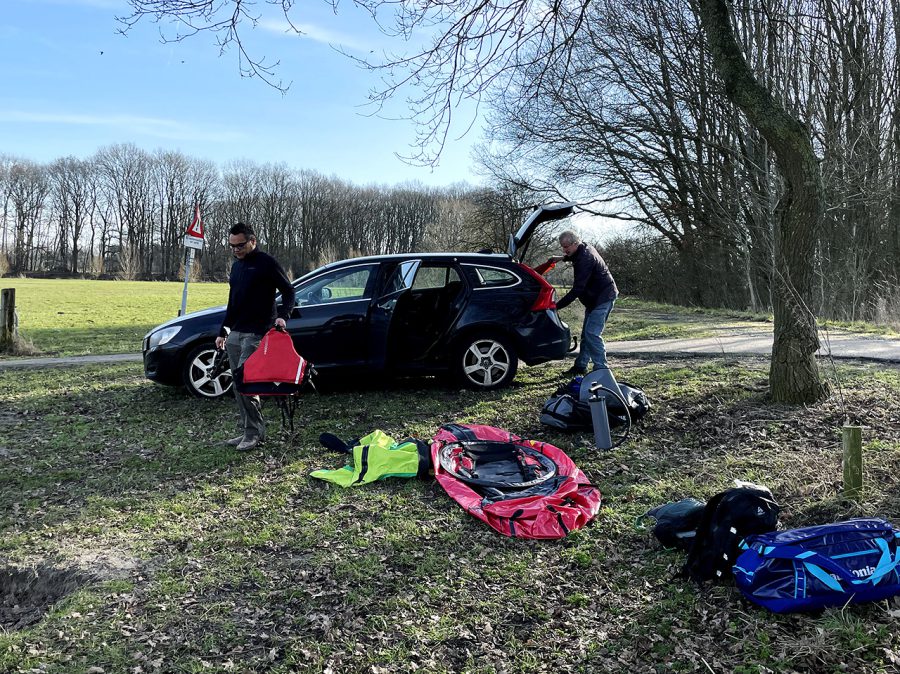
The place we chose for a put-in near the town of Losser was very busy. Dozens of cyclists and hikers took a so-called Smugglers path next to us (it went to Germany), part of which was still covered in mud as it had been flooded just some days before that. The river was also very busy. While preparing our boats (Remi’s Alpacka Gnu, Didier’s Gnarwhal and mine Black Pike Advanced, a Russian-made packraft), we saw several groups of paddlers in Canadian-style canoes. Some of them were clearly rented. But there were some other that brought their own.
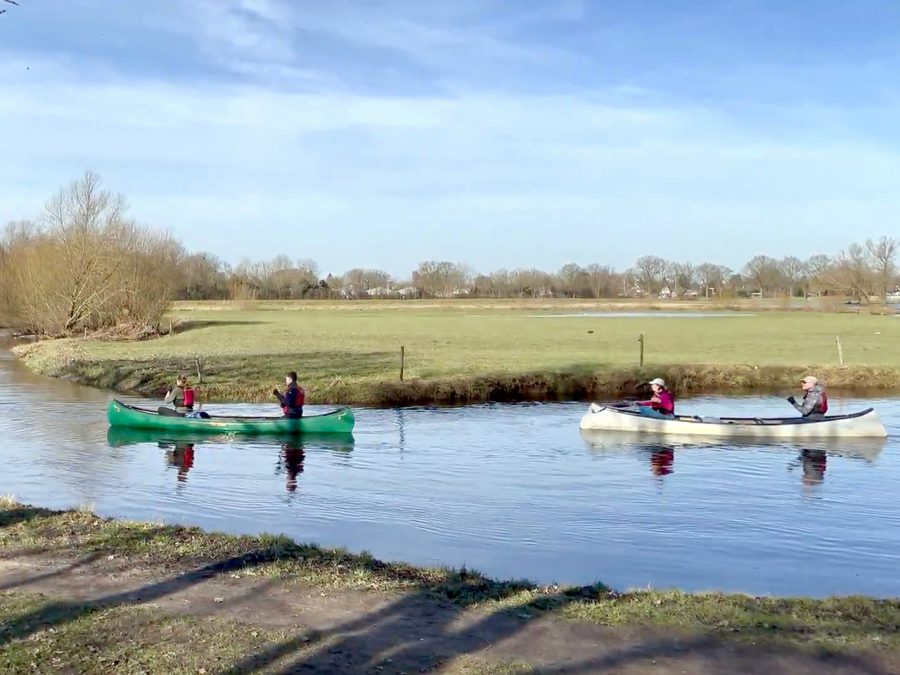
Later we caught up with one of such groups, when they were portaging around a bridge. Whereas the first time I was there, I could just paddle under it, the water levels were so high this time, it was not possible to do it anymore.
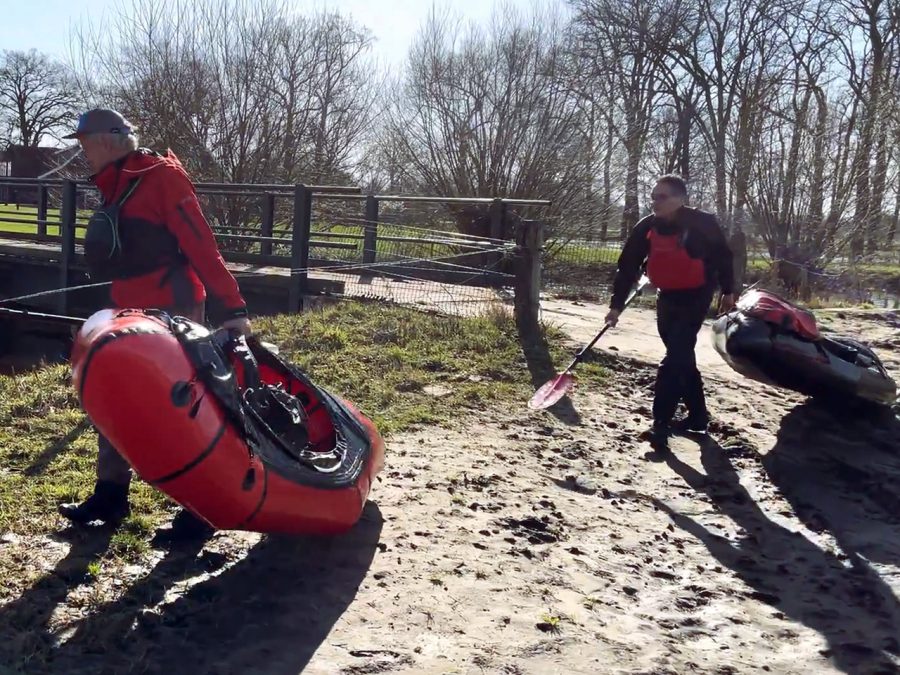
What made portaging somewhat difficult for us in particular, was the fact that all riverbanks were fenced with barbed wire. One time I did not take into account how long my packraft was, and I almost damaged it when it got brushed against the fence. Luckily – no holes. Didier was not so lucky and his packraft got a small pinhole puncture somewhere, which we discovered during our lunch break.

Talking about fences and boarders, the area the Dinkel flows through is directly on the Dutch/German border, which we could sometimes see either as a small stone marker in the middle of a field, or a sign on a motorway. Even now, I still find it fascinating that the idea of a national border can be so ‘transparent.’
The last part before the take-out we paddled through a very beautiful area, which is called the Lutterzand. A nature reserve, this area is characterized by high sand cliffs (up to 8 meters) with a pine forest on top. The sand is believed to originate from the last two ice ages, while the erosion process is still continuing. The first time I came there, the area was rather empty, and I could enjoy its beauty in peace and quiet. This time, however, you could see people everywhere, picnicking, playing with their dogs and just enjoying the warmth of the spring sun.
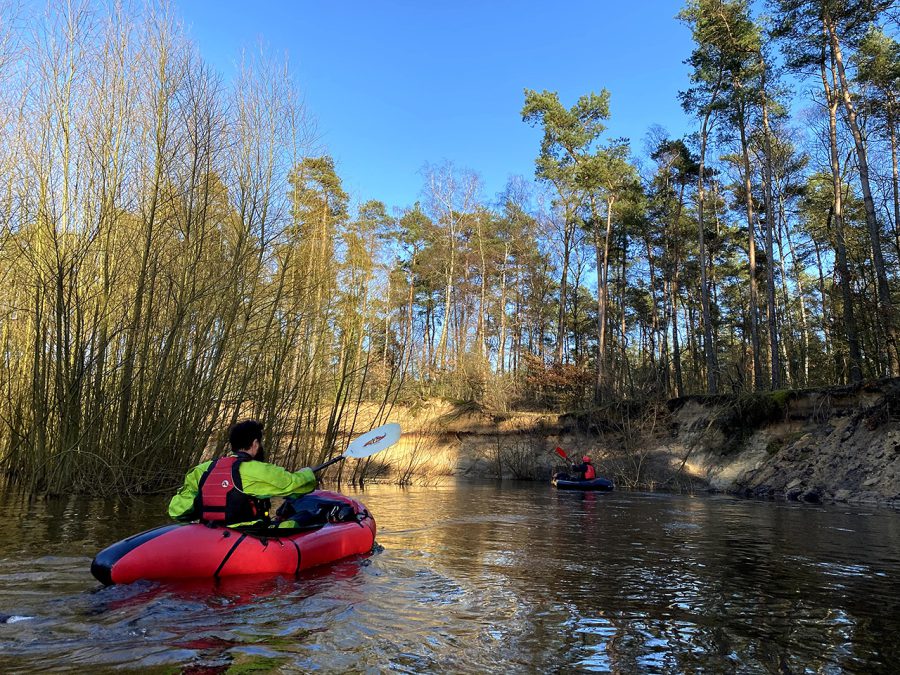
Having paddled for over 15 kilometers, we arrived at the finish before 17:00 with time to spare. It was a very beautiful and relaxed trip with a great company (Senn was the best – he was really enjoying the time on the packraft with his father).
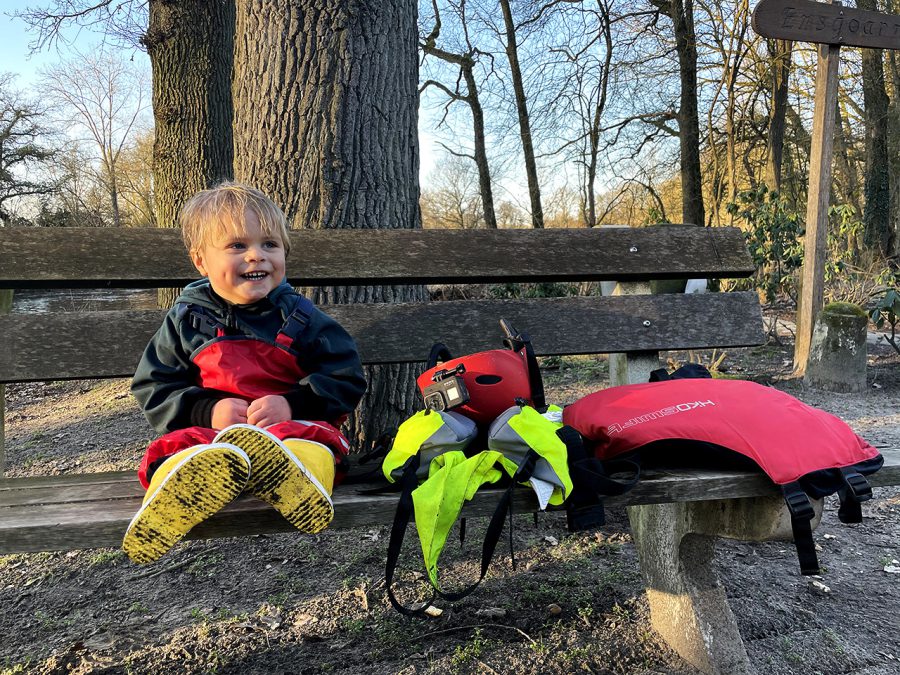
We were also lucky with the weather, as it was a very warm and windless day. After quickly packing our boats, Remi, Senn and I said goodbye to Didier and promised that we should meet again sometime soon. “Maybe to paddle among the tulips,” suggested I. Maybe we will.But for now we need to wait as the sun has gone, the temperature has dropped and the weather is back to what it should normally be this time of year.
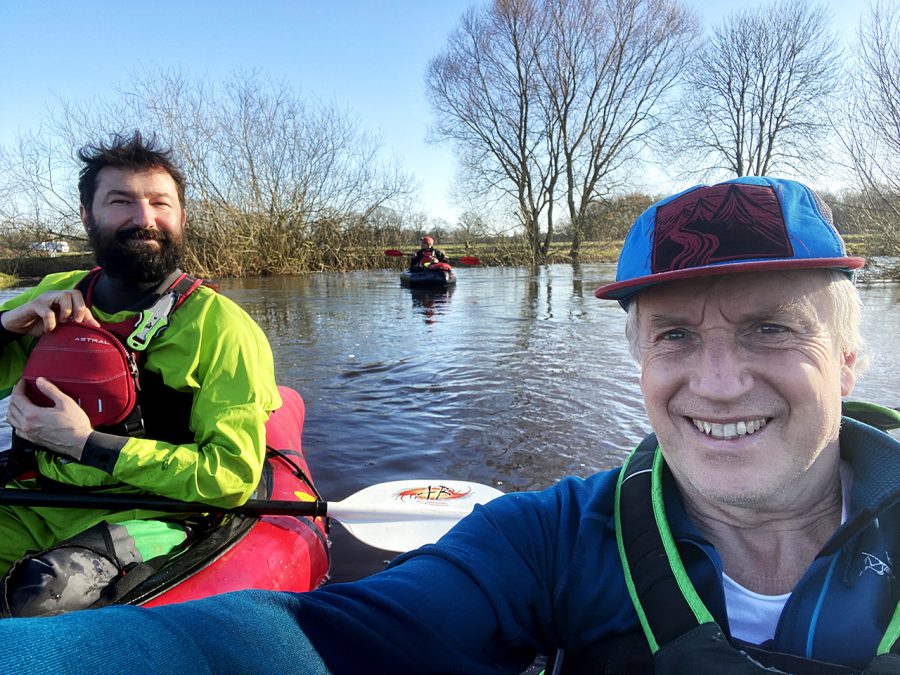
Related Articles
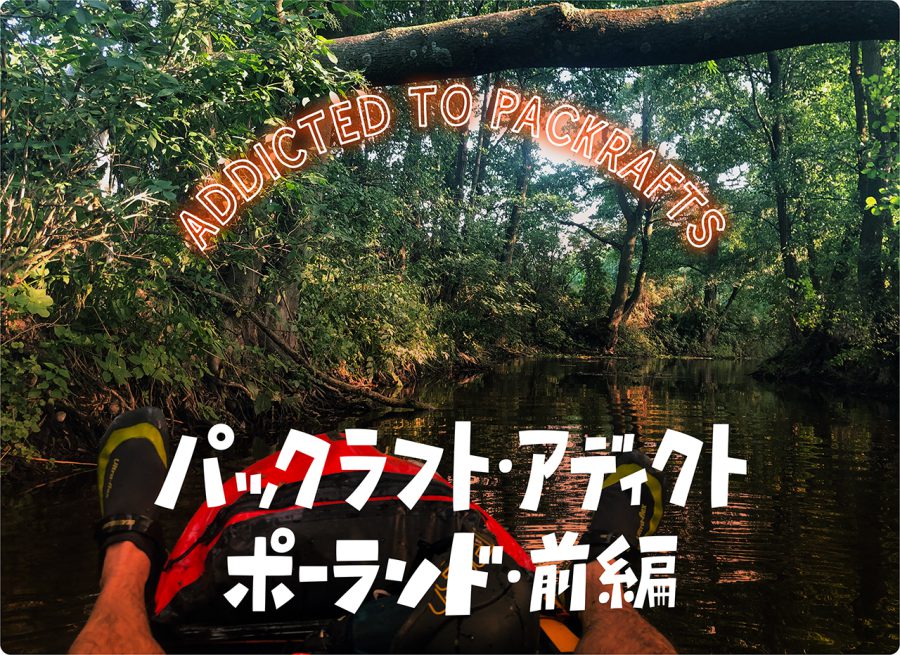
パックラフト・アディクト | #40 ポーランドのウォブジョンカ川 4DAYS TRIP <前編>インスタグラムで見た憧れの川へ
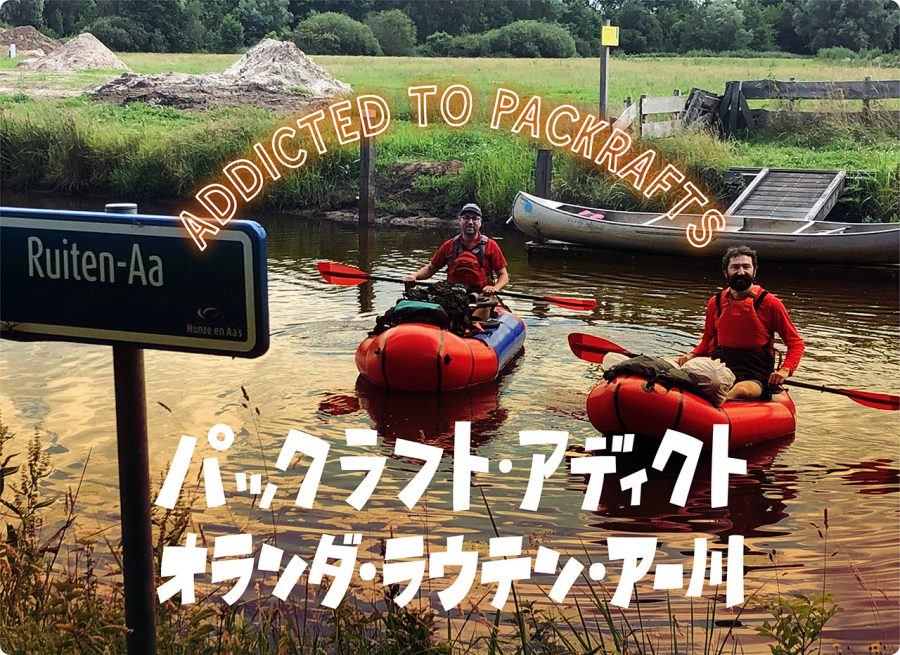
パックラフト・アディクト | #35 オランダのラウテン・アー川でバイクラフティング
- « 前へ
- 2 / 2
- 次へ »
TAGS:

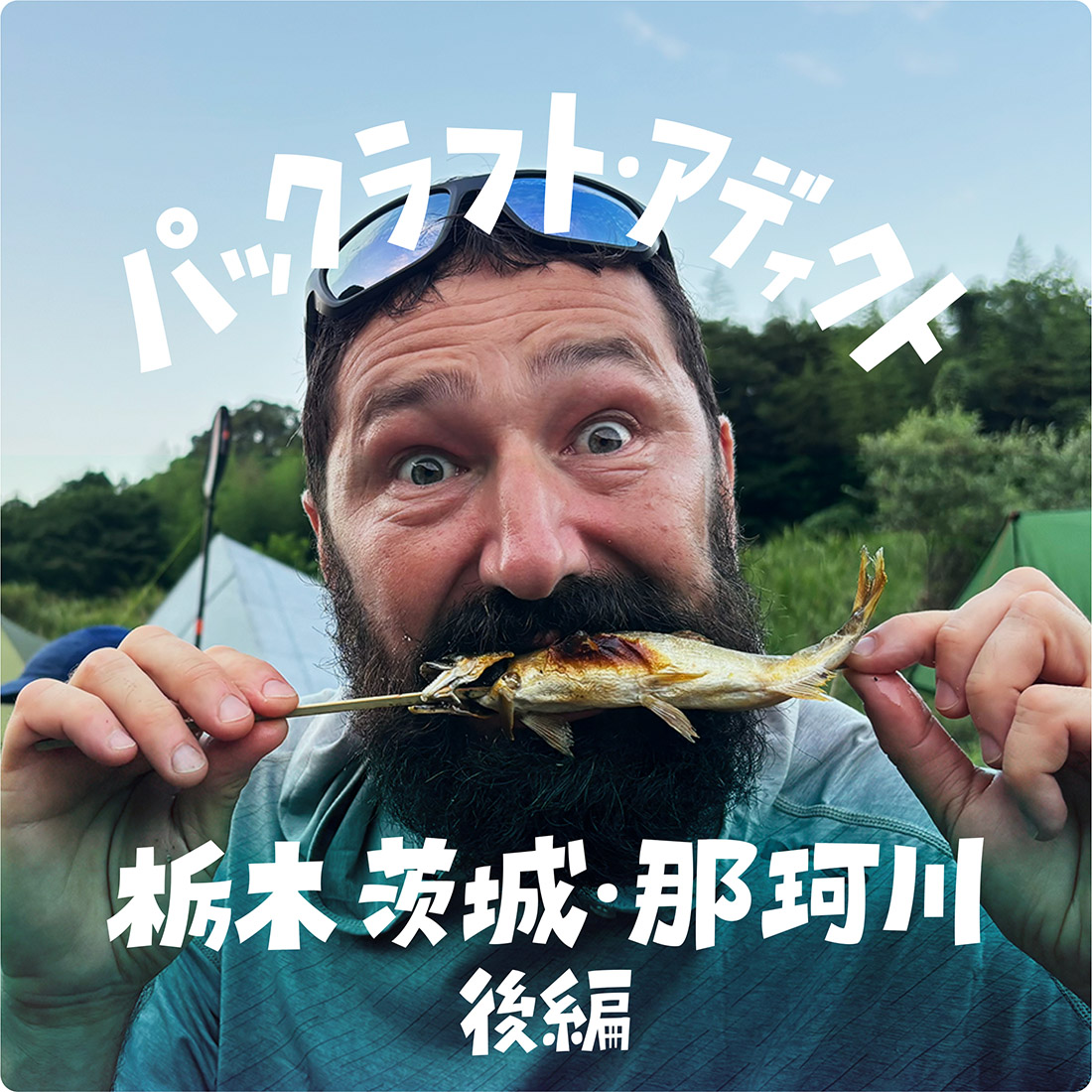
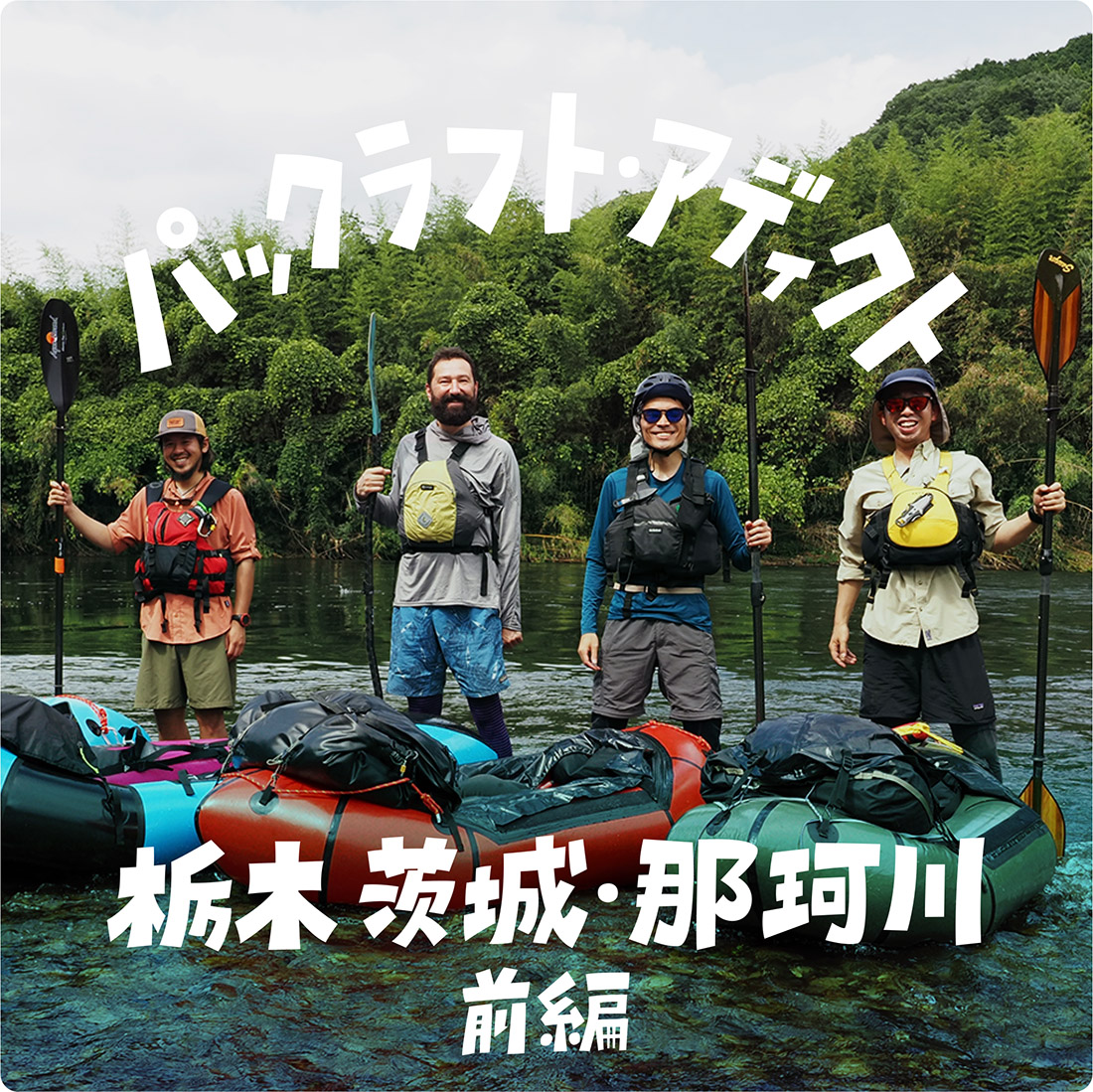
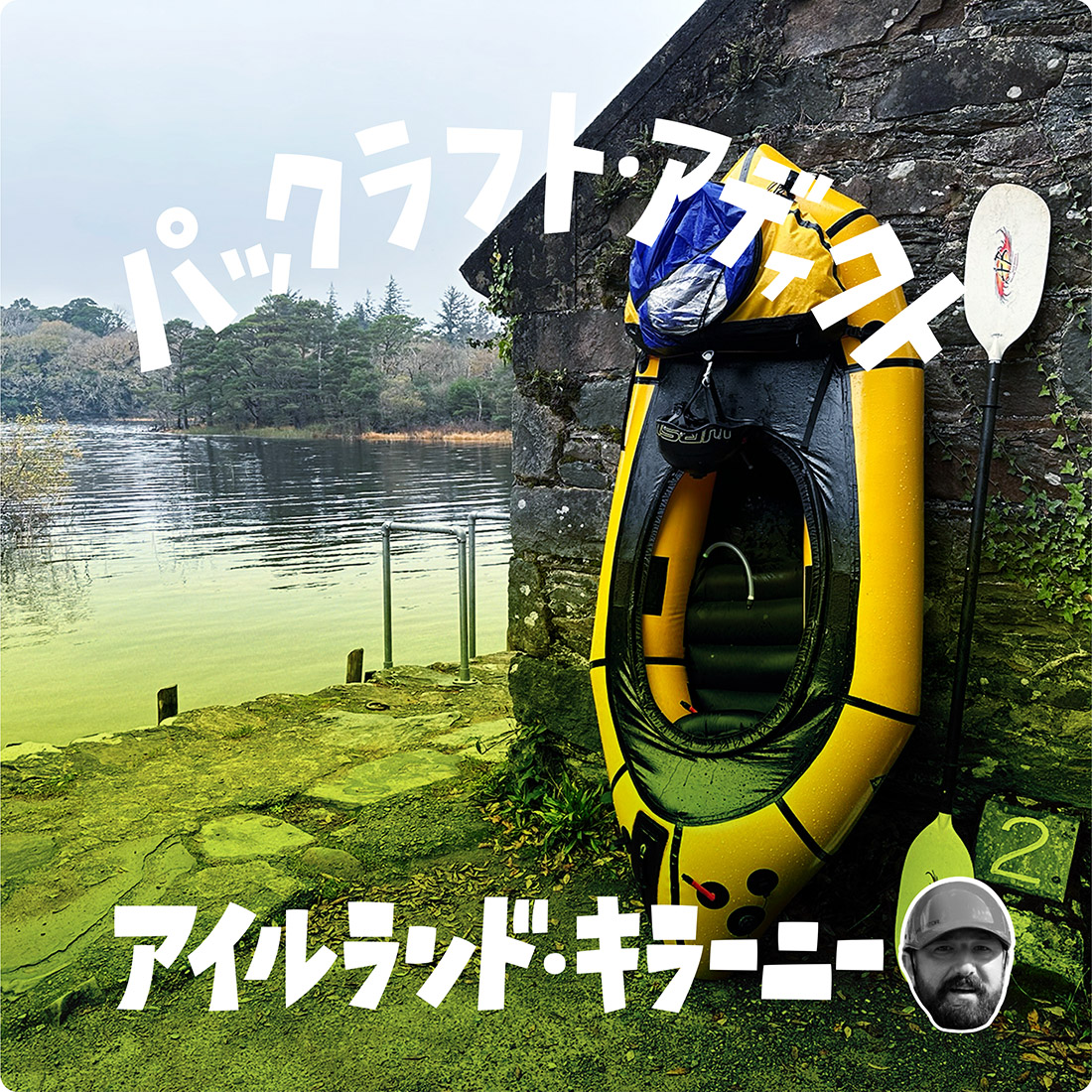
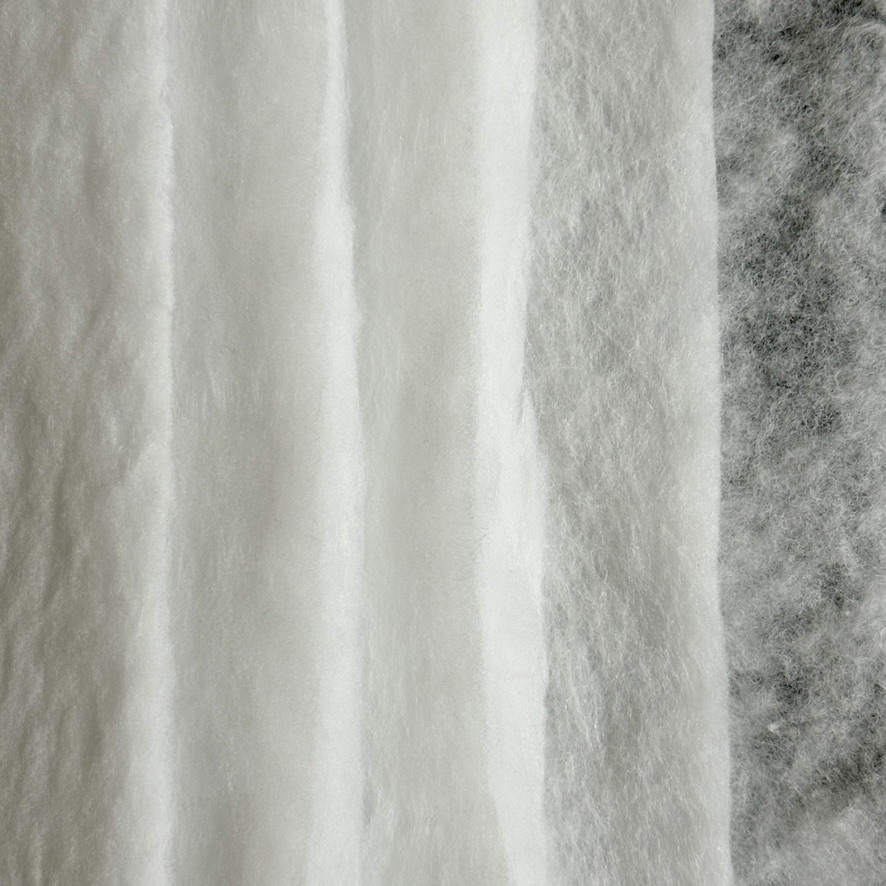
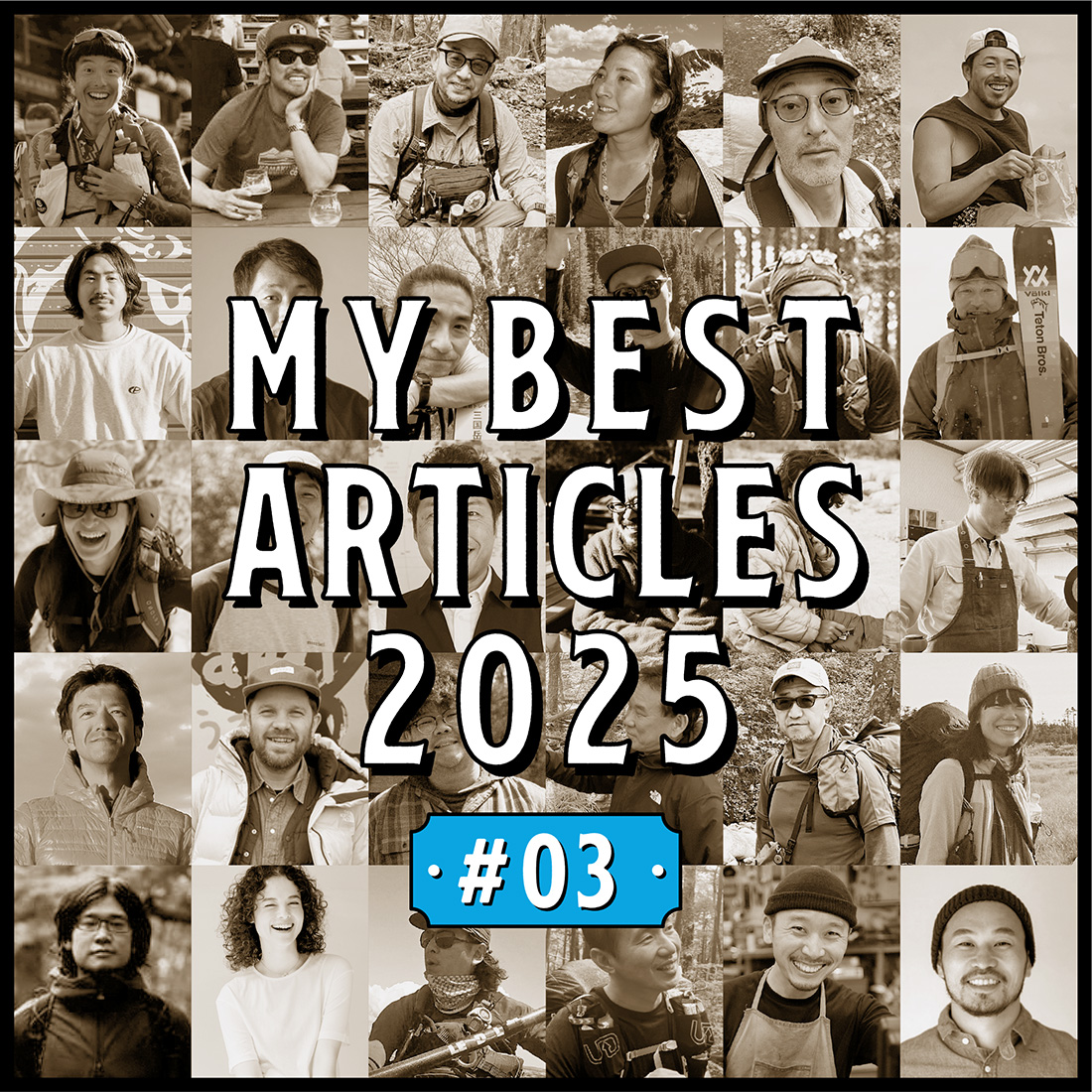
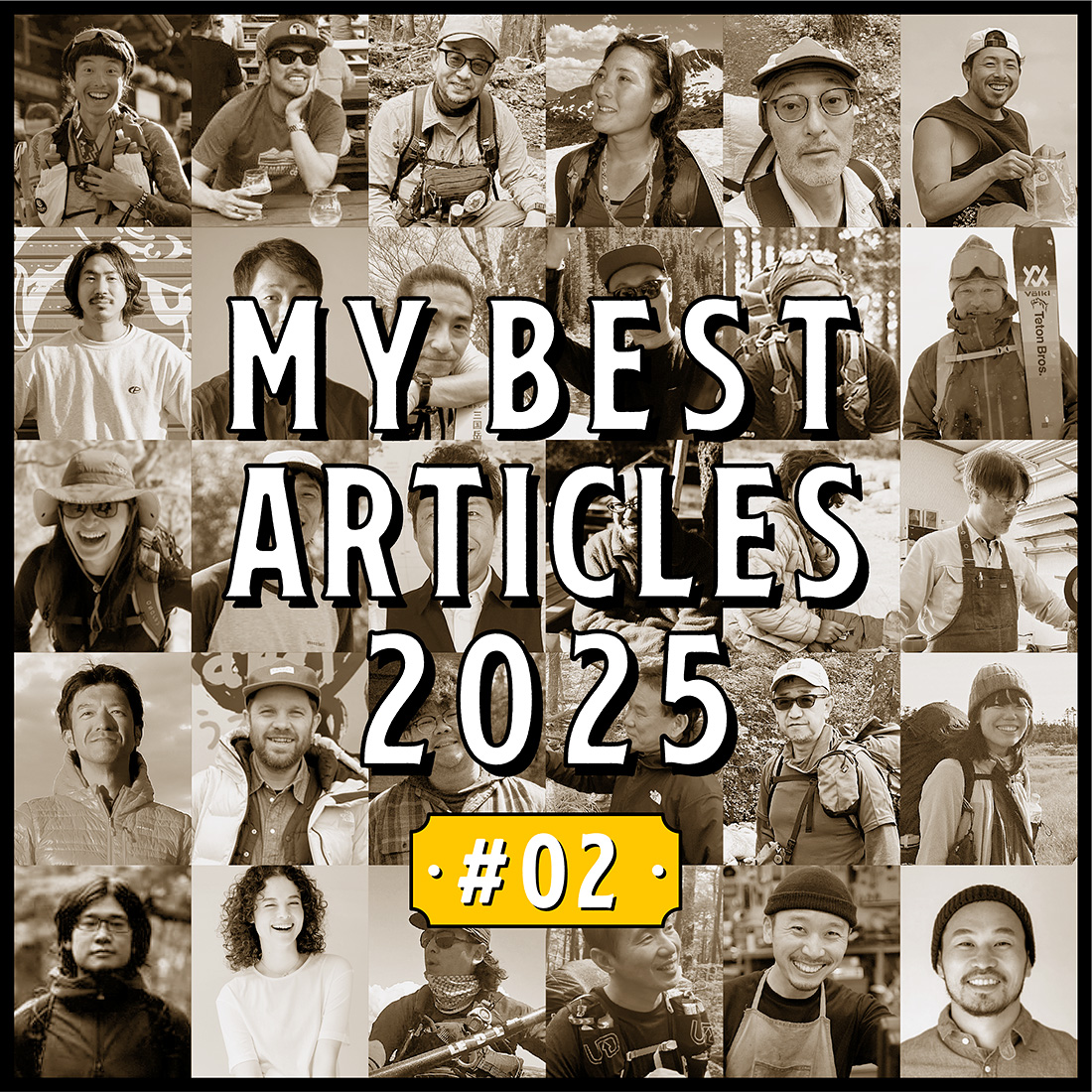







 ULギアを自作するための生地、プラパーツ、ジッパー…
ULギアを自作するための生地、プラパーツ、ジッパー…  ZimmerBuilt | TailWater P…
ZimmerBuilt | TailWater P…  ZimmerBuilt | PocketWater…
ZimmerBuilt | PocketWater…  ZimmerBuilt | DeadDrift P…
ZimmerBuilt | DeadDrift P…  ZimmerBuilt | Arrowood Ch…
ZimmerBuilt | Arrowood Ch…  ZimmerBuilt | SplitShot C…
ZimmerBuilt | SplitShot C…  ZimmerBuilt | Darter Pack…
ZimmerBuilt | Darter Pack…  ZimmerBuilt | QuickDraw (…
ZimmerBuilt | QuickDraw (…  ZimmerBuilt | Micro Pack …
ZimmerBuilt | Micro Pack … 














